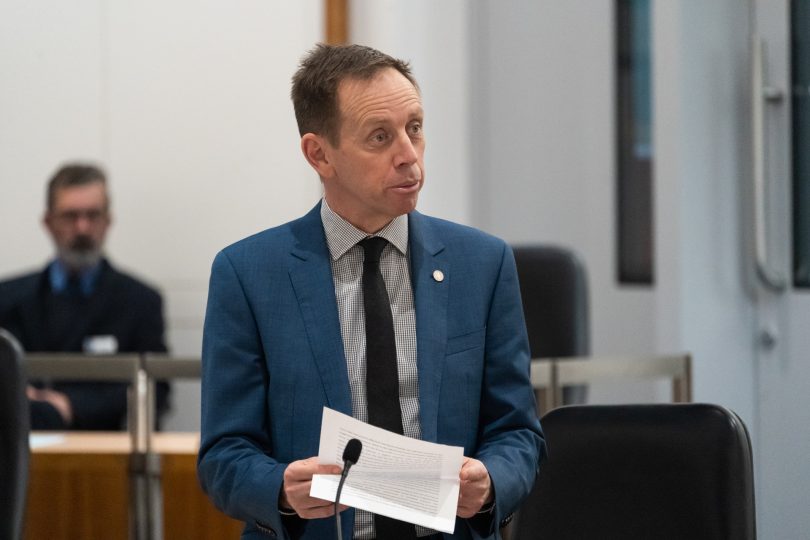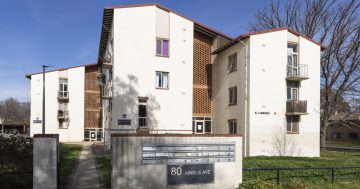
Energy Minister Shane Rattenbury expects legislation by the middle of next year. Photo: File.
Canberra’s notorious energy-sucking rental iceboxes and swelter shelters may soon be banished to the past under a government proposal for landlords to meet a minimum standard for ceiling insulation, as part of overall plans for minimum energy efficiency standards.
Consultation has opened on how the government’s plans will be implemented, including a phase-in period.
Energy Minister Shane Rattenbury said the lack of adequate insulation contributed to unhealthy homes and cost tenants far too much to heat and cool their rented premises.
“Everyone deserves to live in a home that is comfortable and energy-efficient, but due to poor energy efficiency in our buildings, many Canberrans are living in homes that are expensive to heat in winter and cool in summer,” he said.
“Not only is there an economic impact; in many cases, this is having a negative effect on health and wellbeing.”
Mr Rattenbury said some homes were dangerously cold in winter and then dangerously hot in summer.
“It is often the case that those with the least capacity to pay have no choice but to live in properties that are the most expensive to heat and cool – this is inequitable, and this new minimum standard will help address this issue,” he said.
This new consultation will complement previous work related to the government’s long-held intention to introduce minimum energy efficiency standards for rental properties. This is the first stage in implementing these standards.
“We now want to further involve the community, particularly renters and rental providers, in charting the pathway to getting this new insulation standard in place,” Mr Rattenbury said.
The government wants to hear from the general community, but especially renters and landlords on a number of issues before drafting legislation to introduce the regulation in the middle of next year.
Key issues include how long the phase-in period should be for the new energy efficiency standard, what financial assistance should be provided, what safety measures will be required and when any work should be required to be undertaken, such as at the start of a lease or at any time in the phase-in period.
The ACT Council of Social Service (ACTCOSS) welcomed the move, saying more than a third of Canberrans rent their home and pay the highest rents of any Australian capital city.
ACTCOSS CEO Dr Emma Campbell said these households should be guaranteed that their home doesn’t compromise their health or contribute to further financial stress through poor energy efficiency and high energy bills.
“This is a good start, but it is only a start. We are pleased that the ACT Government recognises this and has committed to consider additional measures in future stages,” she said.
“We also welcome the consideration of measures complementing ceiling insulation such as draught-proofing, double glazing or curtaining in this first stage. These are critical to ensuring the benefits of better ceiling insulation are fully realised, rather than literally slipping through the gaps.
“Future stages of this policy will have to address the need for minimum standards around energy-efficient heating and cooling of rental properties. The ACT Government should set out a clear path towards realising this during this first stage.”
ACTCOSS, which is part of the national Healthy Homes for Renters campaign, will be making a submission and urges others to have their say.
The consultation closes on 19 December. To learn more, visit the YourSay website.





















